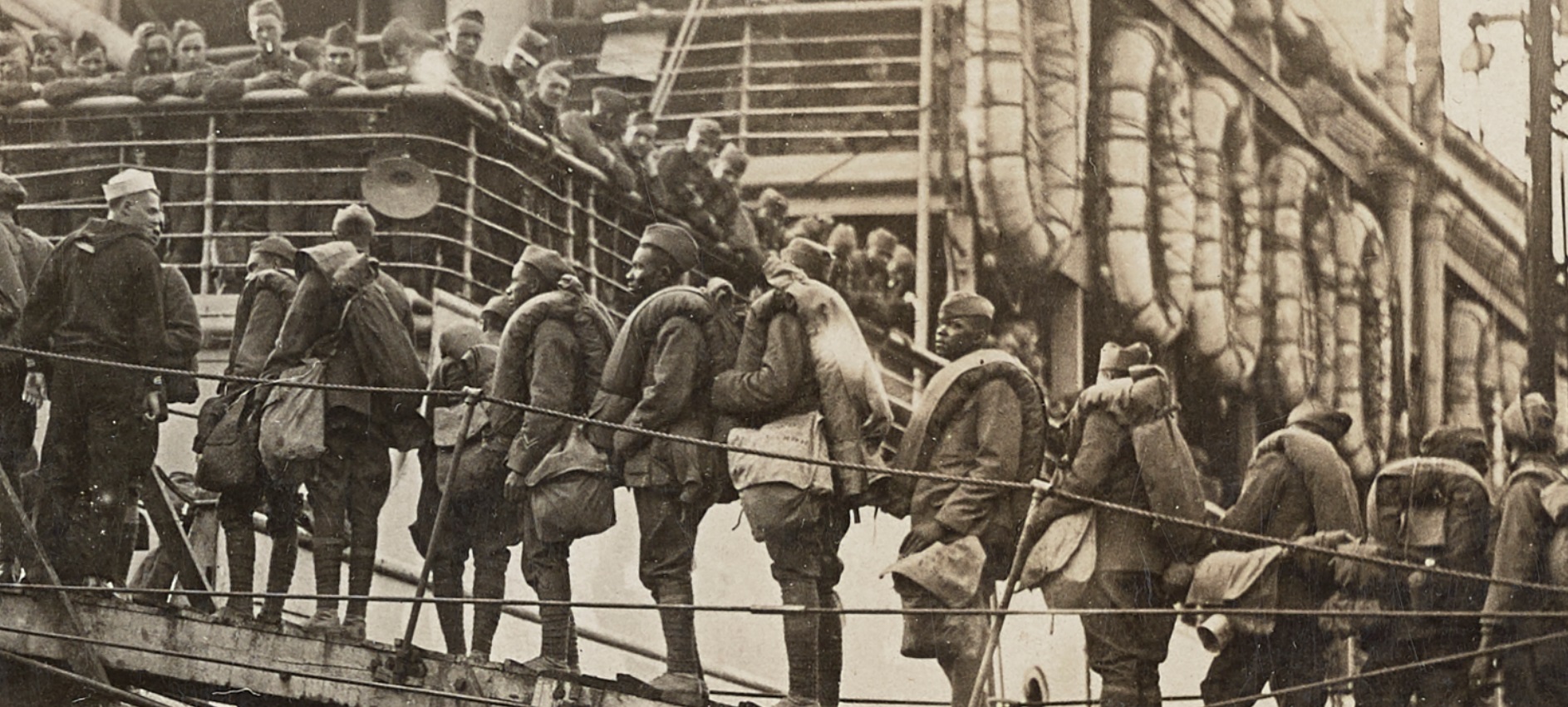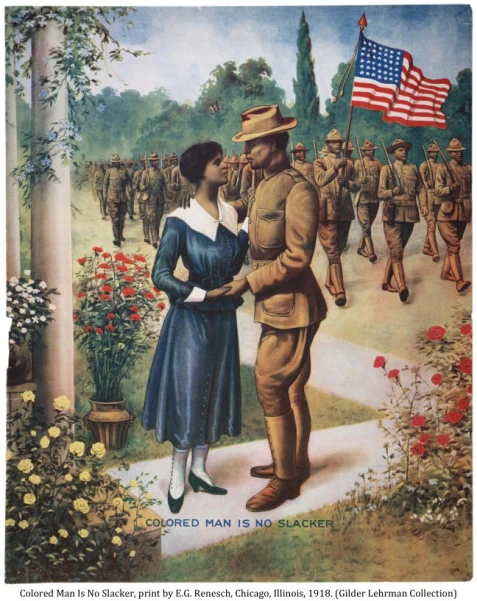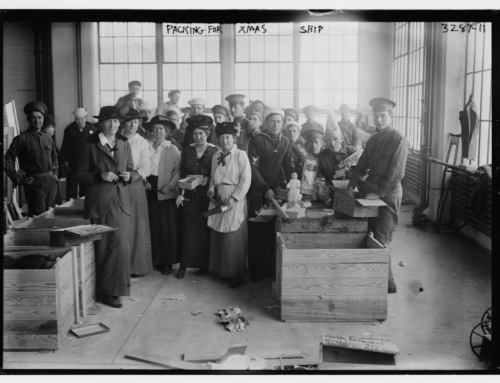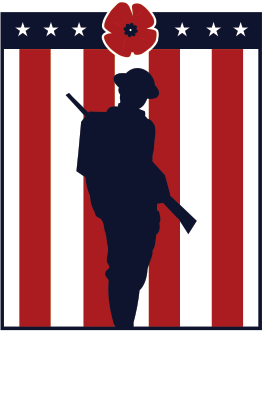Bennie Owens, QMC
Published: 1 March 2025
via the Ray City History website

313-labor-bn-qmc-2
Black soldiers of the 313th Labor Battalion, Quartermasters Corps, boarding a troop transport ship for passage across the north Atlantic. Bennie Owens, of Berrien County, GA was a private in Company D. National Archives.
During World War I, African Americans volunteered and participated in droves to fight for their country, just as they have done in every military conflict in the history of the United States. One such soldier was Bennie Owens, of Berrien County, GA. Private Owens served overseas with 313th Service (Labor) Battalion, Company D, Quartermasters Corps. In Georgia, nearly 50% of men who registered for selective service in World War I were black.
At the onset of the WWI, Bennie Owens was a saw mill worker for the Milltown Manufacturing Company at Milltown (now Lakeland), GA, which was then still a part of Berrien County, GA. (Lanier County was not formed until 1920.) By December 19, 1917, he was enlisted in the United States Army.
 Units of the US military were segregated at that time, as were most aspects of American life. The US Army promoted black military service on posters with the slogan “Colored Man is no Slacker.” Under the presidency of Woodrow Wilson, segregation was the de facto practice in many government agencies. The introduction of photo requirments on job applications meant that African Americans experienced more discrimination than before in the federal government. In the military, most Black troops were denied the opportunity to participate in combat duty or to hold any positions of leadership. Among the rare exceptions was Carlos J. Boggs, of Ray City, GA, who served with the 367th Infantry, “the Buffalo Infantry,” 92nd Division.
Units of the US military were segregated at that time, as were most aspects of American life. The US Army promoted black military service on posters with the slogan “Colored Man is no Slacker.” Under the presidency of Woodrow Wilson, segregation was the de facto practice in many government agencies. The introduction of photo requirments on job applications meant that African Americans experienced more discrimination than before in the federal government. In the military, most Black troops were denied the opportunity to participate in combat duty or to hold any positions of leadership. Among the rare exceptions was Carlos J. Boggs, of Ray City, GA, who served with the 367th Infantry, “the Buffalo Infantry,” 92nd Division.
Bennie Owens instead of fighting on the front lines was, like most black men, relegated to support roles. Black men served in sanitation companies, butchery companies, stevedores, labor battalions, burial details or units assigned to road work, digging holes, or transporting supplies overseas, particularly to France. The caption of one official US Army photo read, “Negro troops are better able to stand the strain of the heavy work and they are used extensively.” African American troops served in all black companies and regiments, albeit under the command of white officers. They were sent to segregated training camps, quarters, and troopships. Black doctors and dentists were assigned to provide essential services to the black soldiers. Edward J. Cobb, of Valdosta, GA, was one of only 12 black officers in Dental Reserve Corps.
Bennie Owens was born February 20, 1893 at Eastman, GA. His parents were Ellen Whitehead Owens and Joe Owens. About 1895, his mother remarried to Lewis Powell and Bennie was enumerated in 1900 in his step-father’s household in Dodge County, GA. The Powell’s were working a rented farm. As a child Bennie briefly attended one of the black schools of the area. In those days all Georgia schools were segregated by law; Georgia spent almost eight times as much per white student compared to black students. Dodge County schools were not completely desegregated until 1970. Bennie’s education ended after the 2nd grade.
The 1910 census indicates the Powell’s were renting a farm on the Ben Harrell & River roads in Dodge County. Bennie’s step-father, Lewis Powell, was farming on his own account.
→ Read the entire article on the Ray City History Blog website here:
External Web Site Notice: This page contains information directly presented from an external source. The terms and conditions of this page may not be the same as those of this website. Click here to read the full disclaimer notice for external web sites. Thank you.



